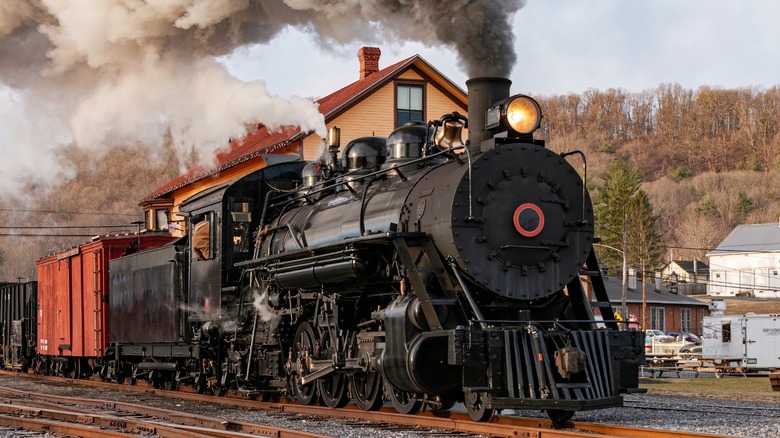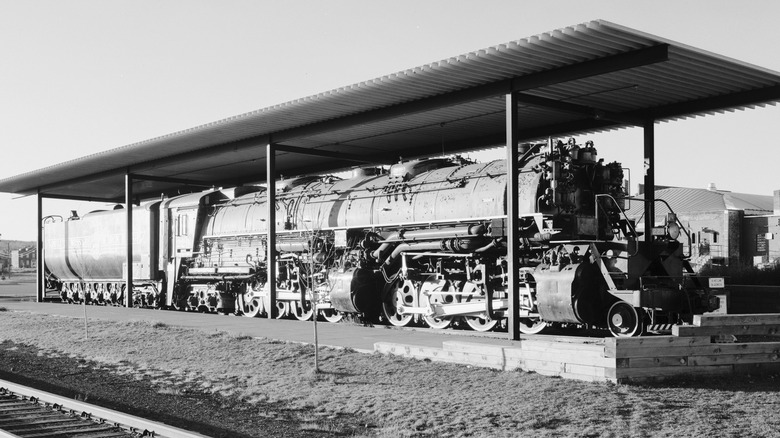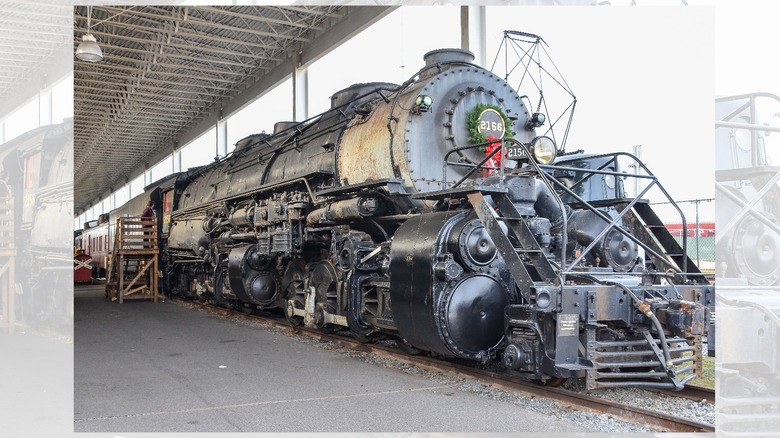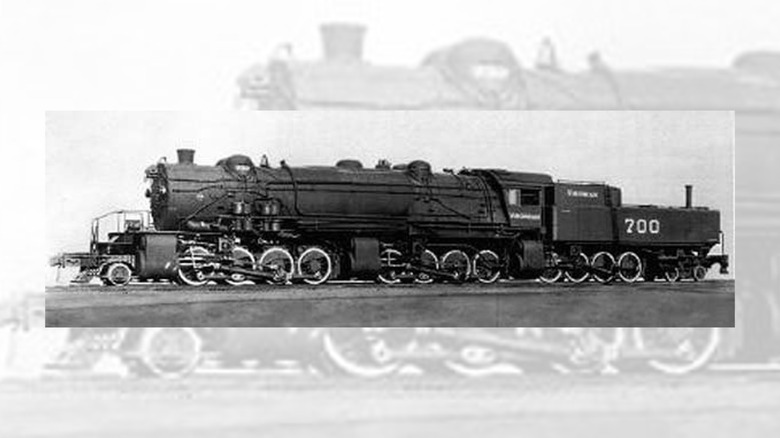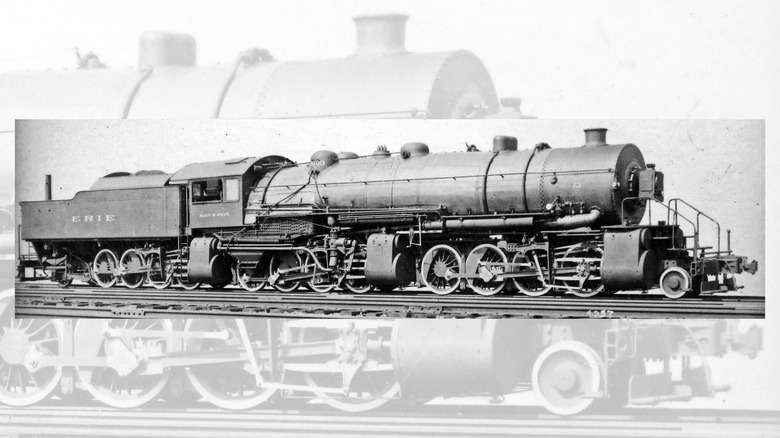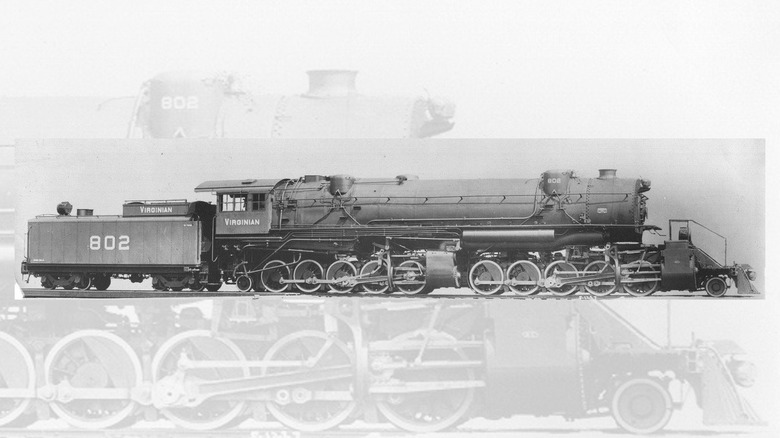The 5 Most Powerful Steam Engine Trains Ever Built
Steam trains were one of the most powerful vehicles of their time, capable of pulling hundreds of cars in one go. Their sheer size, speed, and weight are mesmerizing to think about and captivating to watch.
When you want to compare one train to another, we typically look at horsepower or the physical size. However, many trains, especially those built for freight, are designed to haul as much cargo as possible. That's why a train's capacity to pull heavy weights is as crucial, if not more so, as its top speed.
For example, some say that the Union Pacific Big Boy is the world's most powerful steam engine. This is true, given that it exists today, whereas all the other trains in our list are no longer around or are just on display. But when looking over all of train history, even the Big Boy's impressive 135,375 pound-force (lbf) of power isn't enough to make the list of the most powerful engines ever built. So, let's explore these impressive beasts.
DM&IR Yellowstone
The Yellowstone was the largest and heaviest steam locomotive to ever operate, coming in at 624 short tons. Made for the Duluth, Missabe, and Iron Range Railway, its engine produced 6,250 horsepower and had a top speed of 45 mph. But what's more important for freight is its tractive force, which was 140,093 lbf, nearly 3.5% more than the Union Pacific Big Boy.
This massive number is especially crucial for the Yellowstone, as it was designed to carry heavy iron ore from the mines. If we go by the computation of Republic Locomotive that says you need a force of between 2 pounds per ton and 5 pounds per ton of train weight to move on a straight track, that means the Yellowstone can pull as much as 40,027 short tons behind it.
Union Pacific says that the average gross weight (i.e., the total weight of its cargo plus the weight of the rail vehicle itself) of a single rail car is about 286,000 pounds or 143 short tons. So, if you divide the Yellowstone's capacity with the average weight of each rail car, it should be able to pull nearly 280 fully loaded cars behind it.
[ Featured image by Jet Lowe via Wikimedia Commons | cropped and scaled | Public Domain ]
Norfolk and Western Class Y6a
The Class Y trains were popular steam trains that started life in 1912, but they weren't among the most powerful at first. That changed with the introduction of the Y6a model. This train wasn't that fast, with just a top speed of 50 mph from its 5,600 horsepower engine. Surprisingly, it also wasn't that powerful from the start, capable of just putting out 126,838 lbf as compound Mallet locomotives.
However, the Y6a eventually received an upgrade that bumped its tractive power to 166,000 lbf, a jump of more than 30% from its previous capacity. This means it could pull some 47,429 short tons behind it, or about 331 fully loaded cars.
Unfortunately, there are no more operational Y6a trains in the wild, so you can no longer hitch a ride on one. There is a unit on display, though: #2156 at the St. Louis Museum of Transportation. She holds the record as the strongest pulling steam locomotive in existence, though she hasn't moved in years.
[ Featured image by Mark Levisay via Wikimedia Commons | Cropped and scaled | CC BY 2.0 ]
Virginian Railways XA
When you think of steam locomotives, you usually think of trains that travel long distances between multiple states. However, this wasn't the case for the Virginian Railways XA. This train was an experimental model built by Baldwin Locomotive Works and featured a triplex design, meaning the engine had three sets of drivers (or cylinders and wheels) that push it forward.
Despite it promising concept, the XA was painfully slow, with a top speed of just 5 mph. That speed wouldn't hold a candle to the fastest passenger trains in the world today. The XA didn't need to be fast, though, because it wasn't meant for interstate journeys. Instead, this locomotive was primarily designed to help other trains get over steep inclines along their routes, helping them overcome gravity by pushing from behind.
This is where the XA's 166,600 lbf tractive power comes in. The XA could carry 47,600 short tons of cargo or about 333 fully loaded cars. And since it's pushing trains that also have their own locomotives, it could, in theory, pull even more weight. Unfortunately, Virginian Railways wasn't convinced of its value, and so returned the locomotive to Baldwin. The XA was ultimately converted into two separate engines.
[ Featured image by Baldwin Locomotive Works via Wikimedia Commons | Cropped and scaled | Public Domain ]
Erie Class P-1
The Erie Class P-1 is another triplex locomotive design with a rated power output of 176,256 lbf. This gives it a theoretical maximum capacity of 50,359 tons or 352 fully loaded cars. It's possible the locomotive was capable of much more, with one story published in 1914 from The Independent in New York saying it could pull 650 freight cars — though the reporter didn't clarify whether those cars were full or empty at the time.
Despite the experimental status of triplex locomotives, Erie ordered three of the P-1s, with the first built by Baldwin, the same company behind the XA. It weighed a massive 530 short tons and had a total of 24 powered driving wheels in a 2-8-8-8-2 layout. This gives the locomotive two sets of leading and trailing wheels, plus three sets of eight driving wheels in between.
Just like the XA, the P-1 was slow, producing just enough steam to hit 10 mph. But the P-1 didn't need to be fast, as its primary purpose was to push other trains that needed helper locomotives to get over steep grades. If it was still running, the P-1 would probably be among the oldest locomotives in service today. But instead, Erie scrapped all three by 1933.
[ Featured image by James St. John via Wikimedia Commons | Cropped and scaled | CC BY 2.0 ]
Virginian Railway Class AE
The most powerful steam locomotive is indeed an impressive engine, whose massive build offered output to match. It has a 2-10-10-2 wheel layout, and has 48-inch low pressure cylinders hanging on its sides — the largest that you will find in any engine made and operating in the U.S. This train also has the largest boiler on any train in the world, with an external diameter of 112 7/8 inches, and can handle up to 215 psi of boiler pressure.
When the Class AE was built in the Mallet configuration, it could only do 147,200 lbf — which was already impressive enough to put it above the Yellowstone. But if the engine were configured in simple gear form, which was used for getting long and heavy trains moving from standstill, the Class AE delivers roughly 176,000 lbf. That means it could carry as much as 50,457 tons of cargo or over 350 fully loaded cars.
This makes the Virginial Railway Class AE the most powerful steam locomotives on the planet. Ten of these engines were built, giving Virginian Railway a fleet of these super muscle-y train engines. Unfortunately, all ten were scrapped by 1949, so there are no examples of these behemoths operating or on display.
[ Featured image by ALCO by Wikimedia Commons | Cropped and scaled | Public Domain ]
